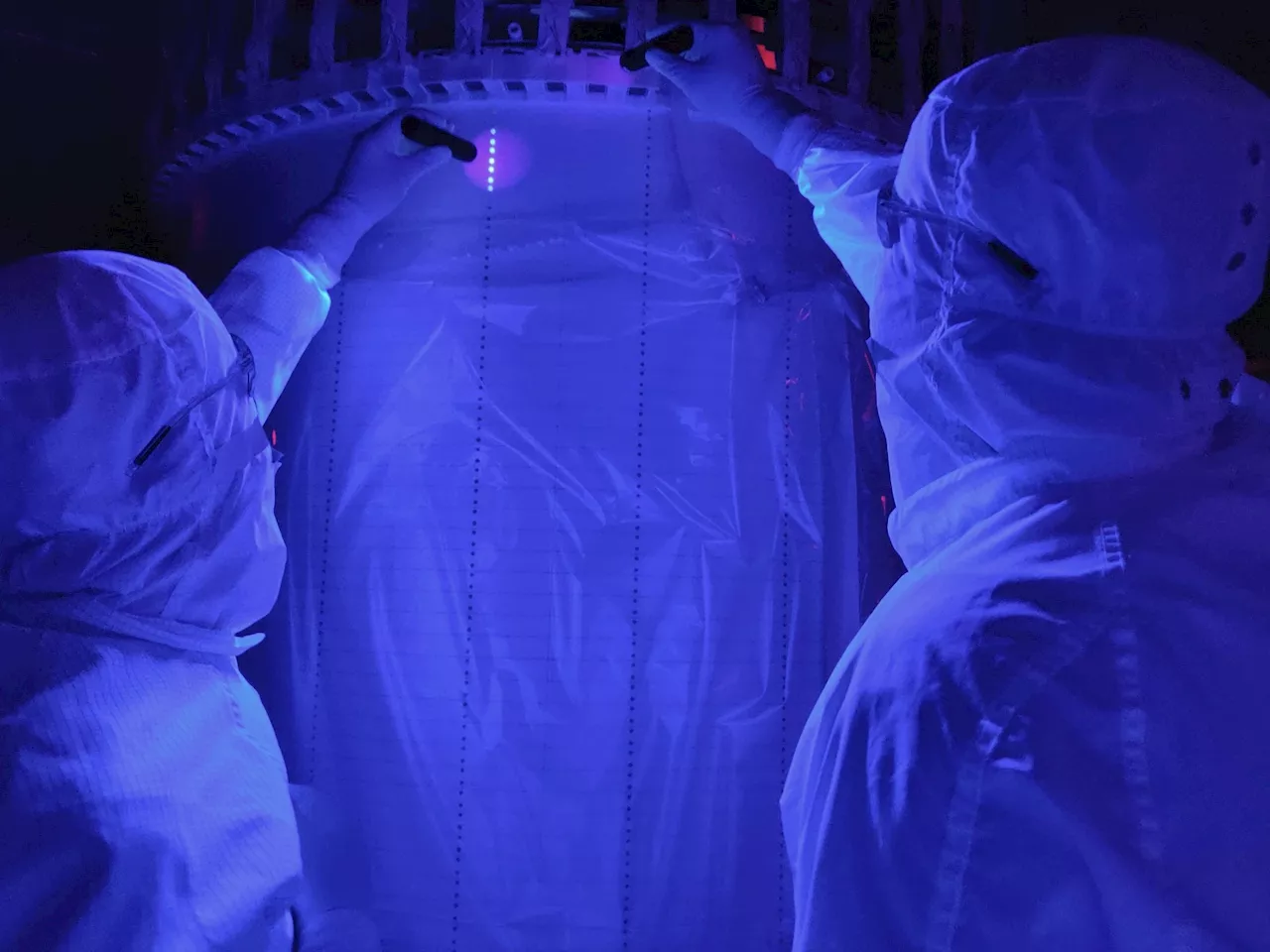The reason we call dark matter dark isn't that it's some shadowy material. It's because dark matter doesn't interact with light. The difference is subtle, but important. Regular matter can be dark because it absorbs light. It's why, for example, we can see the shadow of molecular clouds against the scattered stars of the Milky Way.
Dark matter could have slight interaction with regular matter, study suggests retrieved 26 September 2024 from https://phys.org/news/2024-09-dark-slight-interaction-regular.html
This document is subject to copyright. Apart from any fair dealing for the purpose of private study or research, no part may be reproduced without the written permission. The content is provided for information purposes only.Use this form if you have come across a typo, inaccuracy or would like to send an edit request for the content on this page. For general inquiries, please use ourThank you for taking time to provide your feedback to the editors.
Your feedback is important to us. However, we do not guarantee individual replies due to the high volume of messages.to let the recipient know who sent the email. Neither your address nor the recipient's address will be used for any other purpose. The information you enter will appear in your e-mail message and is not retained by Phys.org in any form.Get weekly and/or daily updates delivered to your inbox.
Physics News Science News Technology News Physics Materials Nanotech Technology Science
United States Latest News, United States Headlines
Similar News:You can also read news stories similar to this one that we have collected from other news sources.
 Largest Dark Matter Detector is Narrowing Down Dark Matter CandidateSpace and astronomy news
Largest Dark Matter Detector is Narrowing Down Dark Matter CandidateSpace and astronomy news
Read more »
 How special is the Milky Way Galaxy?The SAGA Survey just published three new research articles that provide us with new insights into the uniqueness of our own Milky Way Galaxy after completing the census of 101 satellite systems similar to the Milky Way's.
How special is the Milky Way Galaxy?The SAGA Survey just published three new research articles that provide us with new insights into the uniqueness of our own Milky Way Galaxy after completing the census of 101 satellite systems similar to the Milky Way's.
Read more »
 Telescope captures the most detailed infrared map ever of our Milky WayAstronomers have published a gigantic infrared map of the Milky Way containing more than 1.5 billion objects―the most detailed one ever made. Using the European Southern Observatory's VISTA telescope, the team monitored the central regions of our galaxy over more than 13 years.
Telescope captures the most detailed infrared map ever of our Milky WayAstronomers have published a gigantic infrared map of the Milky Way containing more than 1.5 billion objects―the most detailed one ever made. Using the European Southern Observatory's VISTA telescope, the team monitored the central regions of our galaxy over more than 13 years.
Read more »
 See The Gigantic New Map Of The Milky Way That Took 13 Years To MakeJamie Carter is an award-winning reporter and experienced stargazer who covers the night sky, astro-tourism, the northern lights and space exploration. He received the 2023 Popular Media Award from the American Astronomical Society's Solar Physics Division and is the author of A Stargazing Program for Beginners. Writing for Forbes.
See The Gigantic New Map Of The Milky Way That Took 13 Years To MakeJamie Carter is an award-winning reporter and experienced stargazer who covers the night sky, astro-tourism, the northern lights and space exploration. He received the 2023 Popular Media Award from the American Astronomical Society's Solar Physics Division and is the author of A Stargazing Program for Beginners. Writing for Forbes.
Read more »
 200,000 images, 13 years: Record Milky Way map reveals 1.5 billion cosmic jewelsAstronomers have unveiled the most detailed infrared map of the Milky Way ever created, revealing over 1.5 billion hidden objects.
200,000 images, 13 years: Record Milky Way map reveals 1.5 billion cosmic jewelsAstronomers have unveiled the most detailed infrared map of the Milky Way ever created, revealing over 1.5 billion hidden objects.
Read more »
 1.5 billion cosmic objects dazzle in the largest infrared Milky Way map ever createdAndrew Paul is Popular Science's staff writer covering tech news. Previously, he was a regular contributor to The A.V. Club and Input, and has had recent work featured by Rolling Stone, Fangoria, GQ, Slate, NBC, as well as McSweeney's Internet Tendency. He lives outside Indianapolis.
1.5 billion cosmic objects dazzle in the largest infrared Milky Way map ever createdAndrew Paul is Popular Science's staff writer covering tech news. Previously, he was a regular contributor to The A.V. Club and Input, and has had recent work featured by Rolling Stone, Fangoria, GQ, Slate, NBC, as well as McSweeney's Internet Tendency. He lives outside Indianapolis.
Read more »
